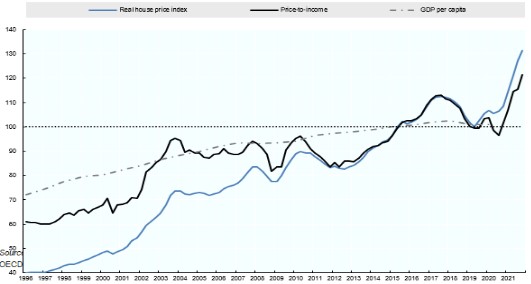It is apparent from the selection of epitaphs under consideration from the Book of Readings, that these second and third century ‘pagans’ exhibited a variety of sentiments in relation to their conceptions of life after death. This is not surprising when paganism featured a multiplicity of beliefs at this point in time; examples of these will be given. There is, however, one salient aspect of commonality, the significance of their achievements in life, as evidence will show. These epitaphs are also influenced by stylistic considerations pertaining to custom and tradition; they cannot truly guarantee intimate revelation of individual lives.[1]
These epitaphs, although sourced from a variety of cities, were, for denizens of the Roman Empire; it is likely they were not all citizens of Rome. The epitaphs for the gladiators would usually fall into this category of non-Roman citizens, as they were mostly slaves. Many of the gladiators, like many of the Roman slaves in general, were from the east and traditionally believed in a life after death.[2] A gladiator’s life was short and brutal; a belief in a better life post death would have been attractive. Danaos, a Thracian styled gladiator, whose epitaph was found in Kyzikos in Mysia, part of the Roman province of Hellespontus in the second century, has departed for “Hades” according to the epigraphical evidence on his stele.[3] This reference to the god of the underworld implies belief in the conceptions of Homer and Hesiod – the journey of the dead to Tartarus.[4] The second epitaph listed under “A gladiator meets his match” of the retiarius, or net fighter, Melanippos, makes reference to the labours of Herakles, another classical allusion; and informs the reader that Melanippos is now “a corpse, wayfarer”, presumably on his way to Tartarus.[5] Both gladiators have the number of their combats in the arena listed, signifying the courage with which they lived their lives and its importance to their memorial.
Romans lived to be memorialised; it was the outstanding ethos of their civilisation. Death masks, funeral marches, record rooms and epitaphs all attest to the importance of conspicuous achievement. This emphasis on achievement in this lifetime is exampled also in the epitaph listed under “A judicial career cut short”. Rufinus, the reader can infer, is likely to have held a magistrate’s post in Alexandria, where he was:
“shining out in the progress he made”.[6]
Despite his judicial achievements he was fated to die, according to his epitaph, and he:
“gave his soul back to the sky, his body to the earth.”[7]
Here is the concept of the duality of ‘the spirit and the material’ evident in the understanding of the composers of this epitaph. The Greek philosopher, or sage, Pythagoras, predates Plato, and may have been one of his teachers. The Pythagorean concept of life, and the afterlife, has syncretic qualities and has been seen as a rearranging of religious/philosophical beliefs, some eastern, with the Hellenic view of existence.[8] Pythagorean, and the later neo-Pythagorean, schools of thought, are as much mystery cults as rational explanations of the cosmos. Orphism influenced Pythagorean concepts, as did aspects of Dionystic cult, along with Egyptian and Chaldean religious beliefs, these mysterious and exotic practices attracted large numbers of the Empire’s population in the second and third centuries; it was a time of social and economic upheaval.[9] Temples to eastern cults were being built in Roman cities during the second century.[10] Neo-Platonism would grow out of this, with Plotinus and then Porphyry driving it philosophically; and Emperor Julian would embrace this in the fourth century, as revealed by his own writings.[11] A movement away from so much reliance on blood sacrifice was a defining element of this pagan evolutionary trend; a Syrian religious cultural characteristic which valued the ethereal over the material.[12]
The epitaph listed under “Beloved in name and nature” from the city of Rome, and adjudged to be late third /early fourth century shows Epicurean influences. The philosophy of Epicurus (341-271BC) had penetrated Roman thought, especially among the better educated Romans; along with other Hellenic philosophies like Stoicism and Platonism.[13] Philetos from Limyra in Lykia was, according to his epitaph:
“holding the view ‘nothing in excess’, and viewing everything as mortal.”[14]
These are the essential principles of Epicureanism and convey a different strand of pagan thought in regard to the concept of an afterlife; in this case a nihilistic one.[15] The epitaph listed under “Speak no evil” is also an example of disbelief in any afterlife and concisely sums up the Epicurean position:
“I existed, I do not exist; so much (for that).”[16]
Epicurus studied the philosophies of Democritus (material atomist) and Plato; his own philosophy endorses the prudent pursuit of pleasure and avoidance of pain.[17] This philosophy then places greater importance on the significance of the life lived and Philetos tells the reader:
“I departed blameless…I educated (others)…declaring to men the divine virtues which proceed from the gods.”[18]
There are also traditional Roman values espoused here, the importance of living a virtuous life, which contributed to the public good. The Stoic philosophy permeated this noble Roman ethos and appealed more to the Roman elite than the common man.[19] The Emperor Marcus Aurelius is the most recognised second century exponent of the Stoic philosophy, through his book Meditations….[20] Prior to the period under consideration, Seneca, was one of Rome’s most influential Stoic statesmen and philosophers.[21] This epitaph then contains a blending of philosophical influences, acknowledging the “underworld gods” in its introduction, and also conveying Epicurean principles and Stoic characteristics.
Several of the epitaphs share a profound sadness, unsurprising when the death of a loved one is the subject, especially a child; but during the period of Roman history when belief in an afterlife for some had evaporated, a gloomy concept of the dead congregating in darkness arose. Stoic materialism left some with only hopeless thoughts about the fate of their loved ones. In “Tasting life” the epitaph listed reads:
“I lie in the tomb forever, no longer seeing the light…weep as you come upon the tomb…”[22]
From the examples provided, it is clear, that these epitaphs of second and third century pagans living within the Roman Empire indicate two distinct views regarding the afterlife, those certain of its non-existence and those entertaining the thought of some further state. Levels of education and class, whether slave or citizen, and where in the Empire, east or west, influence the belief in the kind of afterlife these epitaphs attest to. The beliefs in the gods permeate most inscriptions and the power of fate is described as unavoidable. Detectable schools of Greek philosophy influence many of these beliefs and testimonies. The virtues and achievements listed, however, sing the one song, that immortality is found in what is achieved in this lifetime; carpe diem.
©Robert Hamilton
For More Essays on Ancient History
[ebook_store ebook_id=”62657″]
BIBLIOGRAPHY
Book of Readings , Sydney, NSW: Macquarie University, 2014.
Cumont, Franz, The Afterlife in Roman Paganism, New Haven, Yale University Press, 1922.
Emperor Julian, The Works of the Emperor Julian – Letters to the Uneducated Cynics, (Trans – Wilmer Cave Wright), Loeb Library, London.
Emperor Julian, Two Orations of the Emperor Julian: One to the Sovereign Sun and the Other to the Mother of the Gods, Library of Alexandria, Kindle Edition, 2013.
Ferguson, John, The Religions of the Roman Empire, London: Thames and Hudson, 1970.
Lee, A. D. Pagans and Christians in Late Antiquity, New York, Routledge, 2000.
Marcus Aurelius Antoninus, The Meditations of the Emperor Marcus Aurelius Antoninus, (Trans – George Long), Thomas Y. Crowell & Co. Publishers, New York, 1904.
Plant, Ian, Myth In The Ancient World, Sydney, Palgrave Macmillan, 2012.
Plotinus, The Enneads, (ed – Porphyry), 3rd century AD. Kindle Ebook, 2013.
Scullard, H.H, From The Gracchi To Nero, (5th ed), New York, Routledge, 1982.
Sear, Frank, Roman Architecture, London, Routledge, 1998.
Warrior, Valerie M, Roman Religion, Warrior, Cambridge; New York: Cambridge University Press, 2006.
[1] Warrior, Valerie M. Roman Religion , Cambridge; New York: Cambridge University Press, 2006 , p -30.
[2] Cumont, Franz, The Afterlife in Roman Paganism, New Haven, Yale University Press, 1922. P – 33.
[3] NewDocs IV.4 [Trans. Horsley]
[4] Hesiod, Theogony, 848-849.
[5] NewDocs, op.cit.4
[6] NewDocs IV.10 [Trans. Horsley].
[7] NewDocs.op.cit.10
[8] Cumont, Franz, The Afterlife in Roman Paganism, New Haven, Yale University Press, 1922. P – 21.
[9] Cumont, Franz, The Afterlife in Roman Paganism, New Haven, Yale University Press, 1922. P – 21.
[10] Sear, Frank, Roman Architecture, London, Routledge, 1998. P – 256.
[11] Lee, A. D. Pagans and Christians in Late Antiquity, New York, Routledge, 2000. P – 32.
Emperor Julian, Two Orations of the Emperor Julian: One to the Sovereign Sun and the Other to the Mother of the Gods, Library of Alexandria, Kindle Edition, 2013. P – 134.
[12] Cumont, Franz, The Afterlife in Roman Paganism, New Haven, Yale University Press, 1922. P – 40.
[13] Cumont, Franz, The Afterlife in Roman Paganism, New Haven, Yale University Press, 1922. P – 7.
[14] NewDocs IV.8 [Trans. Horsley].
[15] In the Latin sense of the word ‘nihil’ meaning nothing. – Robert Hamilton.
[16] NewDocs IV.13 [Trans. Horsley].
[17] The pain and anxiety caused by a fear of death is removed through an understanding of the senseless finality of death. – Robert Hamilton.
[18] NewDocs, op.cit.8
[19] Scullard, H.H, From the Gracchi to Nero, New York, Routledge, (5th Ed), 1982. P -359.
[20] Marcus Aurelius Antoninus, The Meditations of the Emperor Marcus Aurelius Antoninus, (Trans – George Long), New York, Thomas Y. Crowell & Co. Publishers, 1904.
[21] Tutor to Emperor Nero – Robert Hamilton.
[22] NewDocs IV.12 [Trans. Horsley].











